#Sus cebifrons
Explore tagged Tumblr posts
Text



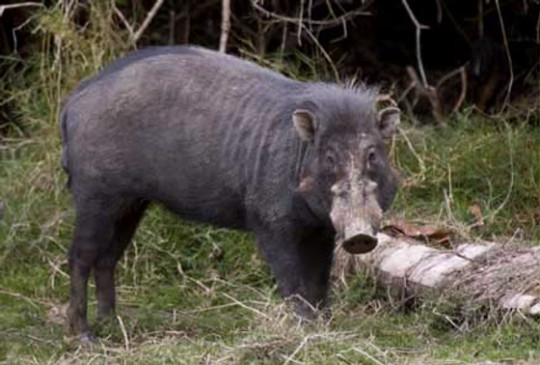
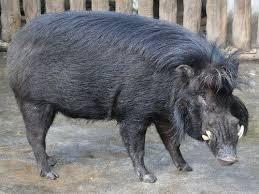




#poll#random poll#fun polls#poll time#my polls#tumblr polls#random polls#polls#tumblr poll#fandom polls#polls on tumblr#polls polls polls#polls are fun#pig#wild boar#animal#animals#fauna#cute animals#Palawan bearded pig#Sus ahoenobarbus#Bornean bearded pig#Sus barbatus#Visayan warty pig#Sus cebifrons#Celebes warty pig#Sus celebensis#Oliver's warty pig#Sus oliveri#Philippine warty pig
16 notes
·
View notes
Video
Visayan Warty Pig by Coyoty Via Flickr: Sus cebifrons. At the Pittsburgh Zoo in Pittsburgh, PA.
#Pittsburgh Zoo & PPG Aquarium#Pittsburgh#Pennsylvania#PA#zoo#nature#animal#fauna#Visayan warty pig#pig#porcine#wild#life#wildlife#biodiversity#Sus cebifrons#flickr
0 notes
Text

The Visayan warty pig (Sus cebifrons) is a critically endangered species of wild pig that lives only in the Philippines. It is named after the Visayan Islands, where it is native, and the three pairs of warts on its face, which may help protect it from the tusks of rival pigs.
One of the most distinctive features of the Visayan warty pig is its crest and mane, which the males grow during the breeding season. The mane can be black, brown, or blonde, and can reach up to 20 cm in length. The crest is a tuft of hair that stands upright on the head, giving the pig a mohawk-like appearance.
The Visayan warty pig is a social animal that lives in groups of three to six individuals, usually consisting of a male, several females, and their young. They are omnivorous, feeding on fruits, roots, tubers, and sometimes crops. They are active at night or dusk, resting in hollows during the day.
The Visayan warty pig is facing a serious threat of extinction due to habitat loss, hunting, and hybridization with domestic pigs. It is estimated that only about 300 of them remain in captivity, while their population in the wild is unknown.
Text credit: Earth Unreal
Image credit: ZSSD
98 notes
·
View notes
Photo

Visayan warty pig (which is the best name) at Diergaarde Blijdorp.
♦ Support me on Patreon! ♦
2 notes
·
View notes
Photo

Sus cebifrons - Visayan Warty Pig
#visayan warty pig#warty pig#pig#hog#baboy ihalas#baboy talonon#baboy sulop#sus#cebifrons#suidae#artiodactyla#mammalia#chordata#animalia#critically endangered#asia#southeast asia#endemic#philippines#terrestrial#forest#grassland#nice hair#pompadour
57 notes
·
View notes
Photo

VISAYAN WARTY PIG Sus cebifrons ©Laura Quick This critically endangered pig sprouts a natty mohawk in the summer to woo the ladies. I just learned this and will keep an eye out for the new 'do on the make at the Zoo. Zoos around the world are working on developing strong offspring that can hopefully be returned to join those tiny populations still existing in the wild, as their native terrain has stabilized and can support at population again. Visayan warty pigs tend to live in groups of four to six. The diet of the pig mainly consists of roots, tubers, and fruits that can be found in the forest. They may also eat cultivated crops (this is a problem). The Visayan warty pig receives its name from the three pairs of fleshy "warts" present on the visage of the boar. Biologists speculate that the reason for the warts is to assist as a natural defense against the tusks of rival pigs during a fight. The boars also grow stiff spiky hair. #viyasanwartypig #wildpig #suscebifrons #©lauraquick #asia #artiodactyla #suidae #losangeleszooandbotanicalgardens #losangeleszoo #lazoo #glaza #philippines #southeastasia https://www.instagram.com/p/B86tcDnHLiw/?igshid=1mcdkli2mg0oe
#viyasanwartypig#wildpig#suscebifrons#©lauraquick#asia#artiodactyla#suidae#losangeleszooandbotanicalgardens#losangeleszoo#lazoo#glaza#philippines#southeastasia
780 notes
·
View notes
Link
Tool use has been reported in a wide range of vertebrates, but so far not in Suidae (the pigs). Suidae are widely considered to be “intelligent” and have many traits associated with tool use, so this is surprising. Here, we report the first structured observations of unprompted instrumental object manipulation in a pig, the Visayan warty pig Sus cebifrons, which we argue qualifies as tool use. Three individuals were observed using bark or sticks to dig with. Two individuals, adult females, used the sticks or bark, using a rowing motion, during the final stage of nest building. The third individual, an adult male, attempted to use a stick to dig with. Stick and branch manipulation was observed in other contexts, but not for digging. Our observations suggest the hypothesis that the observed use of stick to dig with could have been socially learned through vertical transmission (mother-daughter) as well as horizontal transmission (female-male). When used by the females, it altered their digging affordance, and had a specific placement in the nest-building sequence. In addition to its context-specificity and its role in a functional sequence, the observed tool use is distinguished by an ambiguous function or effectiveness as a digging behaviour, and the participation of the male in a female action pattern. Observations of unprompted tool use represented for the first time in a phylogenetic family are rare. These open new possibilities for research on tool use and social learning in Suidae.
15 notes
·
View notes
Text

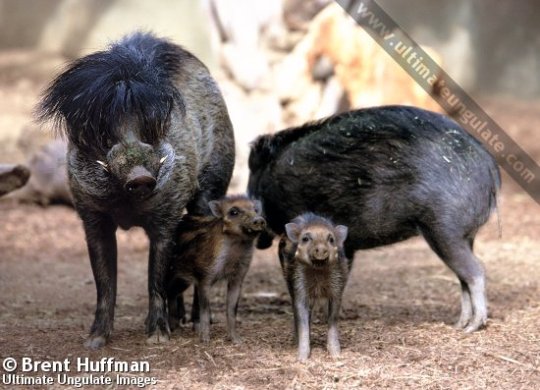
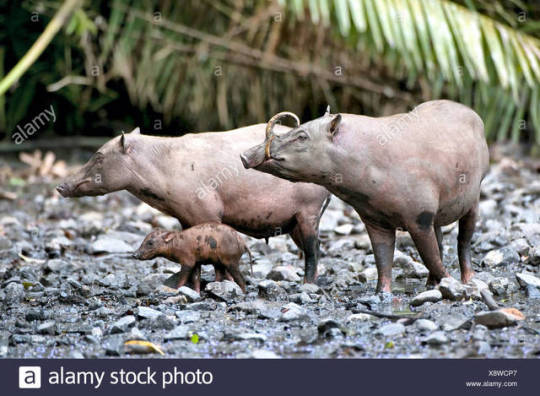
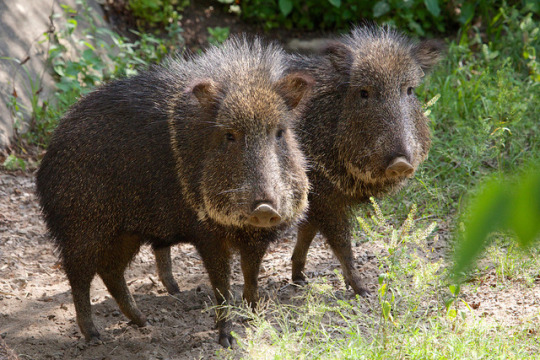
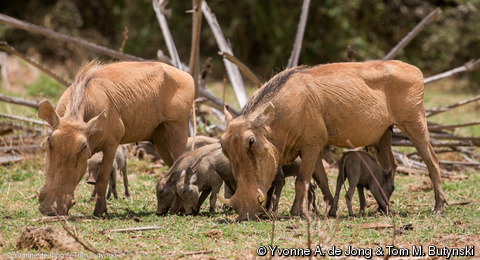


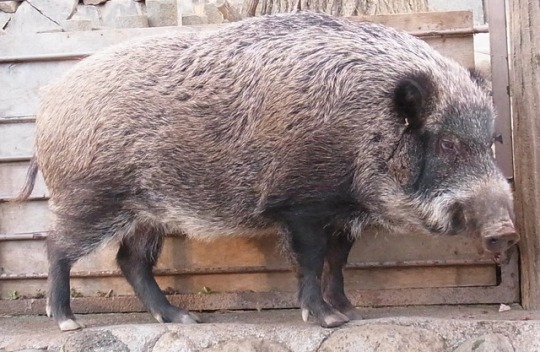
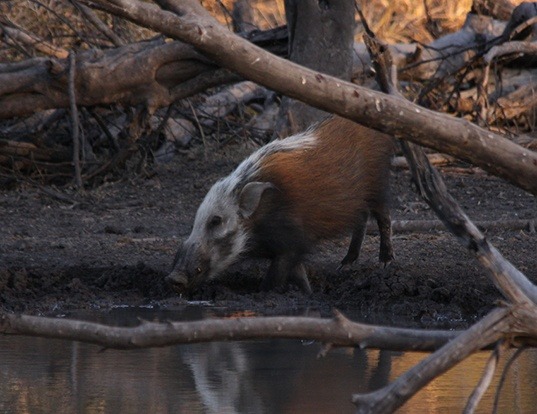
Happy Lunar New Year
Have some wild swine
Javan Warty Pig/Sus verrucosus
IUCN Status Endangered
Visayan Warty Pig/Sus cebifrons
IUCN Status Critically Endangered
Sulawesi Babirusa/ Babyrousa celebensis
IUCN Status Vulnerable
Chacoan Peccary/Catagonus wagneri
IUCN Status Endangered
Desert Warthog/Phacochoerus aethiopicus
IUCN Status: Least Concern
Pygmy Hog/Porcula salvania
IUCN Status: Critically Endangered
Red River Hog/Potamochoerus porcus
IUCN Status: Least Concern
Population decreasing
Japanese Wild Boar/Sus scrofa leucomystax
IUCN Status: nominate species least concern
Subspecies unevaluated
Bush Pig/Potamochoerus larvatus
IUCN Status Least Concern
#lunar new year#chinese new year#year of the pig#year of the boar#pigs#hogs#boars#wild boars#sows#critically endangered#endangered#endangered species#Warty Pig#bush pig#Pygmy Hog#Red River Hog#warthog#peccary
151 notes
·
View notes
Text
Wild boar (Sus scrofa)
Visayan warty pig (Sus cebifrons)

8K notes
·
View notes
Photo

Context-specific tool use by Sus cebifrons
youtube
2 notes
·
View notes
Photo

Visayan Warty Pig (Sus cebifrons) at Brevard Zoo, 2016. #visayanwartypig #endangeredspecies #brevardzoo #zoos #zoosmatter #zoophotography #zoophoto @brevardzoo https://www.instagram.com/p/CmxBHDbvl6Q/?igshid=NGJjMDIxMWI=
0 notes
Text
Threatened Animals from the Philippines: Baboy Damo or Visayan Warty Pig
Sus cebifrons Critically Endangered

Baboy Damo, also known as the Visayan Warty Pig, is endemic to six Visayan islands: Cebu, Panay, Guimaras, Negros, Masbate and Siquijor. However, their populations depleted in three of these islands and is one the verge of disappearance in a 4th island. They are critically endangered to habitat loss and hunting. Due to their small population in the wild, little is known about their natural ecology.
References:
Fernando, C. (2021, February 10). 15 of the many endangered species in the Philippines everyone must protect now. ZenRooms Blogs. https://www.zenrooms.com/blog/post/endangered-species-in-the-philippines/#Endangered-Animals-in-the-Philippines
Visayan warty pig. (n.d.). Encyclopedia of Life. https://eol.org/pages/328323/articles
0 notes
Text
Major breakthrough: Pigs observed to be capable of using tools : Animals : Nature World News
Major breakthrough: Pigs observed to be capable of using tools : Animals : Nature World News

(Photo : Wingham Wildlife Park) Visayan warty pig is a critically endangered species in the Philippines. Mohawk is its most notable trait.
A rare species of swine, which is capable of using tools, has been discovered recently in the Philippines.
The species is called Visayan warty pigs, with the scientific name of Sus cebifrons. These pigs are now critically endangered and native in the…
View On WordPress
0 notes
Text
Watch Genius Pigs Use Tools in a Scientific First
What do humans, ravens, octopuses, ants, and alligators have in common? Despite their immense differences, all of these creatures are capable of using tools, which scientists consider to be a major indicator of intelligence in the animal kingdom.
This honor roll of animal tool-users now has an official new member—pigs—according to a recent study published in Mammalian Biology. Led by conservation ecologist Meredith Root-Bernstein, who is a visiting researcher at the Musée de l'Homme in Paris, the authors report “the first structured observations of unprompted instrumental object manipulation in a pig, the Visayan warty pig Sus cebifrons,” according to the study.
Root-Bernstein first noticed the tool use in 2015, while visiting the zoo at the Jardin des Plantes in Paris. She observed a Visayan warty pig named Priscilla holding a piece of bark in her mouth and using it to scoop into the soil. When she later looked into the research about tool use in pigs, she found that this behavior hadn’t been reported before.
“I just happened to be in the zoo at the right moment and observed the behavior,” Root-Bernstein said in a Skype call. “Of course, it was because I knew about animal behavior that I recognized what I was seeing, but otherwise it was totally serendipity.”
Scientists already knew that pigs are pretty smart. But tool use is a new one for our porcine friends.
“I do think it’s surprising that we haven’t seen, in scientific literature, domestic pigs using tools,” said Root-Bernstein. “All pigs are considered to be intelligent—they are social and they like to manipulate objects with their mouths—so those are all good conditions under which you might expect to see tool use being invented and passed around between individual pigs.”
Root-Bernstein began to check in on the captive pigs in the months following the first lucky sighting, and figured out that the tool use was linked to nest-building behavior. Over the course of 2016 and 2017, she and her colleagues filmed the pigs using tools to prepare nests for piglets multiple times.
Priscilla was particularly adept at using the sticks to prepare for her offspring, according to CNN, and she may have taught her mate and piglets how to copy her unique skills.
“It’s interesting because we really know almost nothing about this pig’s behavior in nature,” Root-Bernstein explained. “The population left in nature is really small because their habitat [in the Philippines] has been destroyed. It is actually endangered for that reason.”
That said, there is at least one other account of Visayan warty pigs also using tools, according to Fernando “Dino” Gutierrez, who runs a foundation in the Philippines that helps protect the species. Gutierrez told National Geographic that he has seen the wild pigs picking up stones with their mouths and throwing them at electrified fences to test its defenses.
Yes, it’s like that scene in Jurassic Park—only with warty pigs instead of raptors. Life finds a way.
These new observations suggest that pigs of all kinds may have applied their ample brains to various forms of tool use. It’s also a reminder that inhumane treatment of pigs, which is unfortunately common due to their ubiquity as livestock, should be mitigated, as these animals are very cognitively advanced.
“I think it would be great if pig researchers and other animal cognition researchers would go out and look for more examples of pigs using tools or doing problem solving and other clever things,” Root-Bernstein said.
“I hope this [paper] will inspire people to look for that, if they haven’t been looking already, and to put pigs in a position where they might have the opportunity to develop tool use.”
Watch Genius Pigs Use Tools in a Scientific First syndicated from https://triviaqaweb.wordpress.com/feed/
0 notes
Text
Pigs have been observed using tools for the first time, and there's video evidence
https://sciencespies.com/nature/pigs-have-been-observed-using-tools-for-the-first-time-and-theres-video-evidence/
Pigs have been observed using tools for the first time, and there's video evidence
Over millions of years, humans have developed a talent for transforming bits of nature into objects that make daily tasks easier. We got so good at it, we started to think tool-use among animals was a rather exclusive club – as it turns out, we were wrong.
Adding to the long list of animals that use tools, we now have evidence that suggests pigs might be using sticks to construct their nests.
We’ve long known that other apes can make and use tools. So can crows. Dolphins use sponges to protect their snoz while foraging. Octopuses have an interesting use for coconut shells. Given their smarts, it’s shocking that science has been silent on the topic of porcine tool use.
“When I looked up tool use in pigs, there was nothing,” Université Paris-Saclay ecologist Meredith Root-Bernstein told Christine Dell’Amore at National Geographic.
Yet when Root-Bernstein visited the famous Jardin des Plantes zoo in Paris in late 2015, that was exactly what she saw – a Visayan warty pig (Sus cebifrons) using a piece of bark to push around loose soil in its enclosure.
Her observations would have been a prime opportunity to fill a gap in the literature. Sadly, over successive months, Root-Bernstein didn’t get a repeat performance to analyse further. But every time she stopped by, that notable bark shank was lying somewhere different in the enclosure, often suspiciously near a patch of churned earth.
Figuring it might have something to do with the species’ desire to build nests, Root-Bernstein returned the following year with several colleagues to solve the mystery of the potential digging stick.
During the winter months, a member of Root-Bernstein’s team hid food in an effort to identify whether foraging behaviour might help explain the potential tool use.
When this proved to be a dead end, the team came back the following October to watch the pigs during their nesting season. It was then the team noticed the adult female – which they affectionately named Priscilla – using a piece of wood to move soil.
youtube
More
Priscilla wasn’t the only one to show interest in gardening. Her two daughters also used a short piece of bark to dig around at various times during the observation period, integrating the tool use into other behaviours associated with nest-building.
The enclosure’s only male – a pappa Visayan warty pig they called Billie – also reportedly had a go at using the stick one day, picking up where one of the younger pigs had left off.
“Billie then investigated the stick and carried it off in his mouth, walking about the fence for a while before dropping it,” UNESCO Local and Indigenous Knowledge Systems expert Trupthi Narayanc was quoted in the report.
“After some time, he picked up the stick and attempted a rather clumsy digging action.”
Just to see if there was something special about these small lengths of bark, Root-Bernstein and her colleagues gifted the pigs with a selection of less natural implements in the form of wooden spatulas of various designs.
The pigs weren’t exactly… grateful. Priscilla used one of these implements twice on day one of the test. And that was it. The unnatural tools then all went missing, either buried around the enclosure or stashed away in their huts.
As interesting as the study is, it poses far more questions than it really answers.
For one thing, the use of the stick didn’t seem to make the process of nesting any more efficient. It was never seen at the start of nest building, and didn’t seem to substitute the use of the pigs’ feet or snouts in churning the ground.
That suggests it’s unlikely to be an innate activity. Instead, at some stage some pig started to flip soil with a stick and – for whatever reason, whether for fun or habit – the activity stuck around.
Since Billie was such a klutz with his stick, we can safely assume he’s not the genius behind the discovery. It’s not clear whether Priscilla might have learned stick-digging in the zoo where she was born, or if she came up with it herself and passed it to her family.
Given these animals were all born in captivity, and the sample is so tiny, it’s hard to draw any solid conclusions. But that isn’t really the point.
If the behaviours have anything to say about pig culture, it’s that we need to now consider the possibility that at least some pig species use found objects in association with tasks such as nesting.
At the very least, Root-Bernstein’s observations lay the groundwork for further studies on wild pigs with an appreciation for their potential skills in tool use.
This research was published in Mammalian Biology.
#Nature
0 notes
Text
Los jabalíes aprenden a utilizar herramientas, según un grupo de científicos
Los jabalíes aprenden a utilizar herramientas, según un grupo de científicos
Científicos intentan determina cómo estos jabalíes aprenden e intercambian sus conocimientos al respecto.
Un grupo internacional de científicos ha encontrado evidencias de que otros vertebrados, en este caso los jabalíes de las Bisayas (‘Sus cebifrons’), también pueden aprender a manejar herramientas, según publicaron en un artículo de la revista Mammalian Biology, según recoge rty comparte…
View On WordPress
#aprender#caza#caza mayor#cazador#científicos#Cinegética#cinegético#conservacion#herramientas#jabalí#jabalíes
0 notes